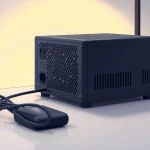Understanding Smart Home Gadgets
What Are Smart Home Gadgets?
Smart home gadgets are technologically advanced devices that improve the overall functionality of a home by allowing users to control various aspects of their living environment from a centralized platform. These gadgets enable automation and remote access, making it possible to manage everything from lighting and heating to security systems and entertainment options via smartphones, tablets, or voice commands. With the growing reliance on technology in our daily lives, best smart home gadgets have become integral to modern living, enhancing convenience, efficiency, and security.
How Do Smart Gadgets Improve Home Security?
Home security has significantly evolved with the advent of smart technology. Smart security devices such as video doorbells, smart locks, and motion detectors provide homeowners with enhanced surveillance capabilities. These gadgets can notify users of any unusual activity in real-time, enabling them to respond promptly or review footage later. Integration with mobile apps allows users to lock or unlock doors remotely, view live feeds from security cameras, and even communicate with visitors through two-way audio features. The combination of these elements ensures a safer and more secure home environment.
The Benefits of Smart Home Automation
Smart home automation offers numerous benefits that contribute to improved living standards. One of the primary advantages is convenience; automating routine tasks such as turning off lights or adjusting thermostat settings means that users can save time and effort. Energy efficiency is another significant benefit. By utilizing smart devices like smart thermostats and energy monitoring plugs, homeowners can optimize energy use, thus reducing utility bills. Moreover, the integration of smart devices often leads to greater interconnectivity between various systems in the home, allowing for seamless management through a single interface.
Top Categories of Smart Home Gadgets
Smart Security Devices
Smart security devices include a wide range of products designed to enhance the safety and security of a home. Some popular options are:
- Smart Doorbells: Devices like the Ring Doorbell enable users to see and communicate with visitors remotely through a mobile app.
- Smart Cameras: Security cameras equipped with motion detection and night vision capabilities can be accessed through smartphone applications, allowing homeowners to monitor their property in real-time.
- Smart Locks: These locks can be controlled via mobile applications, providing the ability to lock or unlock doors remotely. They often come with features like temporary access codes for guests.
Smart Lighting Solutions
Smart lighting solutions allow homeowners to control their lighting via their smartphones or through voice commands. Key products in this category include:
- Smart Bulbs: These bulbs can be dimmed, turned on or off, and even changed in color through an app without the need for traditional switches.
- Smart Switches: These replace existing light switches and provide smart functionalities, including scheduling and remote access.
- Smart Outdoor Lighting: Motion-sensor outdoor lights offer both security and convenience, automatically turning on when someone approaches.
Smart Thermostats and Climate Control
Smart thermostats provide substantial energy savings while ensuring comfort. They learn user preferences and can adjust heating and cooling accordingly. Popular choices include:
- Nest Learning Thermostat: This device adapts to your schedule and can be controlled from anywhere via its app, optimizing energy use based on your habits.
- Ecobee SmartThermostat: Featuring room sensors, this thermostat maintains the desired temperature by adjusting based on the areas being used.
Choosing the Best Smart Home Gadgets for Your Needs
Assessing Your Home’s Requirements
Before investing in smart home gadgets, it’s crucial to assess your specific needs. Consider the features you value most, such as security, energy efficiency, or convenience. Conducting a home audit can help identify areas where smart technology could make a significant impact. For instance, if you travel frequently, enhancing your home security might be a top priority. Alternatively, if you have an interest in renewable energy, then focus on smart thermostats that provide detailed energy usage statistics.
Balancing Cost and Features
When selecting smart home devices, balancing cost with features is essential. While some gadgets may appear to be a high upfront expense, consider their long-term savings and benefits. An expensive smart thermostat that reduces your heating bill significantly can pay for itself over time. Compare the initial investment with the potential savings and the value they add to your lifestyle. Always research product reviews and comparisons to make informed decisions.
Compatibility with Existing Systems
Before purchasing new smart home devices, ensure they are compatible with your existing systems and other smart devices. Many devices from different brands might not work seamlessly together, which can lead to frustration and inefficiencies. Using platforms like Google Home or Amazon Alexa can help in integrating multiple smart devices under one controllable system. Checking compatibility with devices that you already own can save you time and money in the long run.
Installation Tips for Smart Home Devices
Preparing Your Home for Smart Gadgets
Proper preparation can smooth the installation process for your smart gadgets. Ensure you have the necessary tools and a reliable Wi-Fi connection, as many smart devices require Internet access. Consider your home’s layout; optimal placement of devices like cameras and sensors often significantly impacts their effectiveness. If your devices rely on specific wireless frequencies, check for any interference sources like microwaves or thick walls.
Step-by-Step Installation Guide
While installation processes vary by device, a general step-by-step guide can help facilitate a smooth setup:
- Unboxing: Carefully unpack your smart gadget and ensure all components are included and in good condition.
- Read the Manual: Familiarize yourself with the user manual that accompanies the device, as it often contains crucial setup instructions.
- Connect to Wi-Fi: Follow the device instructions to connect it to your home Wi-Fi network.
- App Setup: Download the relevant mobile application to control your smart gadgets and create an account if necessary.
- Installation: Follow the manufacturer’s installation guidelines, whether it involves mounting a camera or replacing an existing switch.
- Configuration: Configure settings through the app to tailor functionalities according to your preferences.
Troubleshooting Common Issues
Even with the best preparations, challenges can arise during installation. Here are some common issues and solutions:
- Device Not Connecting to Wi-Fi: Ensure your network is functioning well and that the device is within range. Restarting the device and router can often resolve connectivity issues.
- App Not Responding: Check for updates on your smartphone and the app itself. Restarting the app or reinstalling it may also help.
- Device Malfunctioning: Refer to the troubleshooting guide in the user manual for specific solutions to device-specific issues.
Future Trends in Smart Home Technology
Emerging Innovations to Watch
The smart home technology landscape is constantly evolving, with innovations that enhance user experiences and introduce new conveniences. Key trends to watch include:
- Increased Use of AI: Artificial intelligence will play a more significant role in predicting user behaviors and preferences, offering personalized automation that seamlessly integrates with daily routines.
- Voice Control Advancements: As voice recognition technology improves, users will experience even more accurate and intuitive control over their smart devices.
- Integration of IoT: The Internet of Things (IoT) will facilitate more interconnected devices, allowing for comprehensive home management across different categories.
The Role of AI in Smart Home Gadgets
AI is increasingly becoming a central feature in smart home gadgets. Through machine learning algorithms, these devices learn from user interactions, adjusting settings automatically based on established patterns. For example, smart thermostats can learn when a household is typically empty and adjust heating or cooling accordingly to save energy. Similarly, AI-powered security systems can differentiate between family members and strangers, accurately reporting potential threats.
Eco-Friendly Smart Devices for Sustainable Living
As the world moves towards sustainability, eco-friendly smart devices are gaining popularity. Products like smart irrigation systems reduce water usage in gardening, while energy-efficient smart thermostats help conserve energy. These devices not only benefit homeowners but also contribute positively to the environment, aligning with global goals for reduced carbon footprints and energy conservation.


